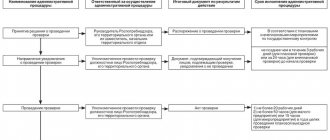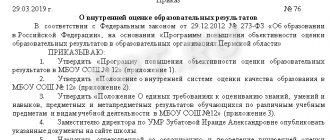During its work, any business entity (individual entrepreneur or LLC) acquires a huge number of documents: registration, accounting, reporting, personnel, permits, supporting and confirming documents. And although this is the 21st century, and electronic document management has long been integrated into business practice, documents in paper format are still an irreplaceable value. The shelf life of some of them is 75 years, as they say, manuscripts do not burn.
We are, of course, not concerned about the historical value of the organization’s documents, but about the fact that the lack of the necessary papers, especially for accounting and personnel, can create difficulties when passing inspections and lead to financial sanctions, in other words, fines. To avoid financial losses, we advise you to check the complete set of all necessary documents from time to time or entrust this check to specialists:
Free business audit
The obligation to collect and store documents of an organization is established by Law No. 125-FZ of October 22, 2004 “On Archival Affairs in the Russian Federation.” According to it, organizations and individual entrepreneurs are obliged to ensure the safety of archival documents, including personnel documents. The list of archival documents is given in the Order of the Federal Archive of the Russian Federation dated December 20, 2020 N 236, it consists of 12 sections and contains 657 items.
Not all of them are related to entrepreneurial activity, so we suggest that you check your documentary baggage with the necessary minimum that organizations and individual entrepreneurs must have.
Registration documents of organizations and individual entrepreneurs
Let's start with the documents with which, in fact, the life of a legal entity begins or the acquisition of individual entrepreneur status by an individual. The list of registration documents for an organization is noticeably larger than for an individual entrepreneur:
- Charter of a limited liability company. To date, this is the only constituent document for an LLC. If changes have been made to the charter, it is advisable to store its previous editions with the note “invalid due to the adoption of a new edition of the charter dated ___.”
- Minutes of the general meeting of founders or the decision of the sole participant to create an LLC. Everything is clear here - this document is an expression of the will of the founders to create a legal entity.
- List of LLC participants. The list must contain current information about each participant (passport data of an individual or organization data), the size and value of each participant’s share, information about its payment. If there are shares owned by the company itself, then information about them is also indicated.
- Certificate of state registration of a legal entity or individual entrepreneur (issued until 2020).
- Certificate of registration with the tax authority (for individual entrepreneurs and LLCs).
- Entry sheet in the Unified State Register of Legal Entities (for LLC) or in the Unified State Register of Individual Entrepreneurs (for individual entrepreneurs). As for extracts from the Unified State Register of Legal Entities (USRIP), there is no need to store them. Usually a bank, notary, counterparties, etc. They request an extract that is no more than a month old, so if necessary, you need to get it again each time.
- Letter with information about statistics codes (for individual entrepreneurs and LLCs). You can obtain this information without contacting the statistical authorities personally, but through a form on the official website of Rosstat. You can find your statistics codes with our help. Just print a page from the site with your codes. Banks also accept such a document, but if you wish, you can also receive an official document with the seal of regional statistical authorities.
Mandatory details of the primary document
Only the primary document with all the required details has legal force (clause 4 of article 9 of Law No. 402-FZ):
- title (for example, “Act of services rendered,” “Accounting certificate”);
- Date of preparation;
- name of the document originator (for example, OJSC SKB Kontur, LLC Soyuz, IP Ivanova E.V.);
- the content of the document or business transaction (for example, “Internet access services”, “Materials transferred for processing”, “Payment of the invoice for office supplies”, “Interest accrued under the loan agreement”);
- natural and monetary indicators (pieces, meters, rubles, etc.);
- responsible positions (for example, “Accountant”, “Storekeeper”, “HR Manager”, “Head of Sales Department”, etc.);
- personal signatures of the parties.
A properly executed document will help if necessary in legal proceedings, for example, when the buyer does not pay the debt or tries to invalidate the transaction. But a document with errors or fictitious signatures can play a cruel joke - so you should never sign for the supplier if he suddenly forgot to sign. Carefully store all primary documents and always carefully check all the details in incoming documents.
In practice, it is still possible to encounter customer complaints regarding the lack of a seal. Let us remind you that as of 04/07/2015, the seal has been canceled for most organizations and can be used at will (Federal Law of 04/06/2015 No. 82-FZ). Information about the organization's seal must be specified in the charter. If the counterparty insists on putting a stamp, and you do not have one legally, you can notify the counterparty in writing about its absence and provide an extract from the accounting policy.
Documents of the organization confirming its legal address
When opening a bank account, the bank will require from the client organization “information about the presence or absence at its location of a legal entity and its permanent management body.” The following documents (optional) can serve as confirmation of the organization’s legal address:
- Certificate of ownership of the premises in which the LLC is located (if the owner is the founder);
- The lease agreement and the acceptance and transfer certificate of the premises, as well as a copy of the certificate of ownership of the premises, certified by the lessor;
- The owner’s consent to register an LLC at the home address and a copy of the certificate of ownership of the premises.
Such documents are also requested by tax authorities (during the initial registration of an LLC and subsequent changes to the Unified State Register of Legal Entities) and licensing authorities. For individual entrepreneurs, there are no special documents confirming his address. A copy of the registration in the passport is enough.
We reflect VAT when purchasing assets
To carry out its activities, the company needs to purchase works, products, services and raw materials (fuels and lubricants, utilities, building materials, household goods, etc.). The cost of some material assets already includes tax obligations under the VA; therefore, in order to avoid multiple taxation of goods, the buyer has the right to deduct VAT by posting the transaction in accounting.
Typical accounting entries:
| Contents of operation | Debit | Credit |
| Reflects the input value added tax on the purchase of assets and material assets (fixed assets, inventories, intangible assets, works, goods, services) | 19 | 60 |
| The DS tax is written off when transferring material assets into production, the sale of which is exempt from VAT. | 20 23 29 | 19 |
| BUT written off if it is not possible to confirm the input tax on the DS (the invoice is lost) | 91 | 19 |
| Reinstatement of VAT is reflected, postings according to the previously presented tax return on assets used in transactions not subject to tax return. | 20 23 29 | 68 |
| Tax liability accepted for deduction | 68 | 19 |
Note that the cases in which VAT should be restored are strictly regulated in paragraphs 1-4, 6, paragraph 3 of Article 170 of the Tax Code of the Russian Federation. The legislation does not provide for reservations or exceptions.
Permitting documents of organizations and individual entrepreneurs for certain types of activities
This refers to those types of activities that require additional documents from government services:
- Licenses for licensed types of activities;
- SRO approvals (for construction companies);
- Confirmation that you have submitted a notice of commencement of activity (in the cases specified in Article 8 of Law No. 294-FZ of December 26, 2008);
- Permits from the SES and the State Fire Service (for shops, catering establishments and hotels);
- Certificates issued for your products or services, etc.
Accounting for inventories (PBU 5/01)
When maintaining “simplified” accounting, the procedure for recognizing expenses changes:
- for the purchase of inventories, including for production needs;
- in the form of the cost of raw materials, materials, goods, other costs of production and preparation for sale of products and goods;
- with a decrease in the cost of inventories.
Regardless of the type of activity of the organization, with “simplified” accounting, it is possible to evaluate purchased inventories at the price of the supplier, and other costs directly related to the acquisition of inventories can be included in expenses for ordinary activities in full in the period in which they were incurred (clause. 13.1 PBU 5/01 “Accounting for inventories”).
According to the general rules, as materials are released into production, they are written off from the accounts of material assets and credited to the corresponding accounts of accounting for production costs (clause 93 of the Guidelines for accounting of inventories, approved by order of the Ministry of Finance of Russia dated December 28, 2001 No. 119n ).
The new procedure allows a micro-enterprise to recognize the cost of raw materials, materials, goods, other costs for production and preparation for sale of products and goods as part of expenses for ordinary activities in the full amount as they are acquired or carried out (clause 13.2 of PBU 5/01 “Accounting” inventories"). This simplified method of accounting does not imply the formation and reflection of inventory balances (raw materials, materials, purchased goods, work in progress, finished goods) in accounting records.
Entities that are not micro-enterprises can write off in a similar manner, but provided that the nature of their activities does not imply the presence of significant balances of inventories.
Such balances of inventories are considered significant, information about the presence of which in the financial statements can influence the decisions of users of these statements. The organization establishes the materiality criterion independently (clause 11 of PBU 4/99 “Accounting statements of the organization”, approved by order of the Ministry of Finance of Russia dated July 6, 1999 No. 43n, letter of the Ministry of Finance of Russia dated January 24, 2011 No. 07-02-18/01).
Thus, when applying this simplified method of accounting, the cost of raw materials, supplies, goods, other costs of production and preparation for sale of products and goods are reflected in the debit of account 20 “Main production” (in the debit of other accounts for accounting for production costs - when using such accounts) in correspondence with accounts for accounting settlements with suppliers, other contractors, wages personnel, etc. in full amount as raw materials, supplies, goods are purchased and other costs are incurred for the production and preparation for sale of products and goods. Wiring is done:
DEBIT 20 CREDIT 60 (70, 71, 76…)
— reflects the cost of purchased inventories.
The total amount of costs recorded on account 20 (on other production cost accounts - when using such accounts) is written off at the end of the reporting period to the debit of account 99 "Profits or losses" (to the debit of account 90 "Sales" - when using such an account ).
In a similar manner, you can keep records of inventories intended for management needs. Now small enterprises can recognize expenses for the acquisition of inventories intended for management needs as part of expenses for ordinary activities in the full amount as they are acquired (clause 13.3 of PBU 5/01). This simplified method of accounting does not imply the formation and reporting of the balance of such inventories.
Accounting and reporting documents of organizations and individual entrepreneurs
Accounting and reporting can be accounting and tax. You can find out how one differs from the other in this article. Here we will limit ourselves to the fact that accounting is mandatory only for organizations, and tax accounting is carried out by all taxpayers (including LLCs and individual entrepreneurs). Based on this, the list of documents of the organization is much more significant than that of an individual entrepreneur, due to the financial statements.
The organization's accounting documents include:
- Accounting registers (general ledger, order journals, memorial orders, account transaction journals, turnover and accumulative statements, accounting books, inventory lists, etc.);
- Accounting statements (balance sheets, profit and loss statements, explanatory notes);
- Working chart of accounts;
- Accounting policy;
- Correspondence on accounting issues.
Documents related to tax accounting (which are maintained by both organizations and individual entrepreneurs) include:
- Tax returns;
- Books of accounting of income and expenses;
- Invoices;
- Purchase books and sales books;
- Documents confirming the tax loss, the amount of which has been carried forward to future periods;
- Acts of reconciliation with the Federal Tax Service and certificates of the status of settlements with the budget.
Primary documents record the fact of business transactions and are the basis for accounting and tax accounting:
- Cash documents and books;
- Bank documents;
- Warrants, timesheets;
- Invoices;
- Expense reports;
- Acts on acceptance and delivery of property and services;
- Acts on write-off of inventory items;
- Receipts, etc.
Agreements and documents confirming their execution:
- Treaties, agreements, contracts, invoice agreements;
- Protocols of disagreements under contracts;
- Correspondence, calculations, certificates, conclusions to contracts and agreements;
- Transaction passport;
- Liability agreements;
- Correspondence regarding accounts receivable/payable;
- Documents on acceptance of completed work (acts, certificates, invoices).
Documents on cash register equipment:
- Cash register passport;
- Cash register registration card;
- Journal of the cashier of the operator;
- Service agreement with the service center;
- Used control tapes;
- Fiscal memory drives, etc.
The essence and meaning of accounting documents
Legislative requirements, in particular the provisions of the Accounting Law, make it mandatory to document all events in the economic sphere. Accounting documents are used to confirm the completion of any transactions and serve as written evidence of ongoing processes.
An accounting document is a form in which current events, their valuation, and other criteria that distinguish a business transaction can be recorded.
By type, financial accounting documents and their purpose can be classified as follows:
- Administrative. Based on them, business transactions are not recorded. These documents act as instructions for performing certain actions. This group includes orders and instructions from management.
- Exculpatory - confirm the completion of actual transactions in the current activities of the company. They are the basis for making records, for example, acts of acceptance and transfer of valuables, invoices for write-off, internal movement. Often their presence must be confirmed by administrative documents.
- Accounting documents are designed to simplify the accounting procedure. They are various statements, accounting certificates that explain the procedure for performing actions and their expediency.
- Combined documents bear the characteristics of administrative and exculpatory documents at the same time. They serve as the basis for the emergence of a business transaction and also contain an indication of its completion. In this case, as an example, we can consider cash documents (expenditure cash order).
Personnel documents of the organization and individual entrepreneur
Personnel documents are under special attention of tax authorities, funds (PFR, MHIF, Social Insurance Fund) and labor inspectorate (LIT). Individual employers have the same responsibilities as organizational employers with regard to maintaining personnel records.
We provide a list of personnel documents for organizations and individual entrepreneurs that every employer must have.
- Inner order rules
- Regulations on the protection of personal data of employees
- Staffing table
- Employment contract with each employee
- Employee personal card (form T-2)
- Work books of employees (if the employee is registered at the main place of work)
- Book of movement of work books and inserts in them
- All documents related to the calculation and payment of salaries and other payments to employees
- Labor protection instructions for positions (professions)
- Time sheet and calculation of wages
- Briefing log (familiarization with instructions)
- Vacation schedule
- Orders and instructions of the head of personnel
- Job descriptions for each position (if the contract contains a link to the instructions)
- Regulations on remuneration and bonuses for employees (if this is not specified in the contract)
- Regulations on certification of employees (if certification is carried out)
- Provision on trade secrets (if there is such a provision in the contract)
- Agreement on full financial responsibility (not for all employees)
- Shift schedule (if there is shift work)
- Collective agreement (if such an agreement has been concluded)
- Documents on certification or assessment of working conditions of workplaces
- Documents on labor protection
- Journals and books of personnel records (employment contracts, orders, personal files, travel certificates, military records, etc.).
Storage periods for organizational and individual documents
Typically, the storage of documents is carried out by an accountant, human resources specialist, lawyer, and secretary. It’s good when there are several employees, and you can entrust one of them with maintaining and storing all this documentation.
And yet, even if the business is small, and the owner does not have time to devote a lot of time to this issue, it is necessary to think about the safety of documents. Here are the storage periods for the main groups of organizational and individual documents (see the List for the full list):
| DOCUMENTATION | STORAGE LIFE |
| Registration documents | constantly |
| Licenses and certificates of conformity | constantly |
| Annual financial statements | constantly |
| Accounting quarterly reporting | 5 years |
| Monthly accounting reports | 1 year |
| Accounting registers, working chart of accounts, accounting policies, correspondence on accounting issues | 5 years |
| Primary accounting documents, books and journals | 5 years |
| Accounting and tax accounting data for the calculation and payment of taxes, documents confirming income and expenses, as well as payment (withholding) of taxes | 4 years |
| Tax returns | 5 years |
| KUDiR for simplified tax system | constantly |
| Annual pay slips to the Social Insurance Fund | constantly |
| Quarterly payslips in the Social Insurance Fund | 5 years |
| Declarations and calculations for insurance contributions for pension insurance | 5 years |
| Agreements and documents related to them (except for leasing and collateral) | 5 years |
| Documents related to CCP | 5 years |
| Occupational safety documents | 5 years |
| Employment contracts | 75 years old |
| Personal files of the organization's leaders | constantly |
| Personal files of employees | 75 years old |
| Personal cards of employees | 75 years old |
| Documents of persons not hired (forms, applications, resumes) | 3 years |
| Original personal documents of employees (work books, diplomas, certificates) | on demand, and unclaimed - 75 years |
| Books, magazines, personnel records cards | 75 years old |
Where to store documents of the organization and individual entrepreneurs?
If there are few documents, then the easiest way is to create your own archive - store them in a safe (fireproof cabinet) or allocate a separate room for the archive. The law does not provide specific requirements for the design of the archive; the main thing is that it fulfill its function of collecting and storing documents.
Documents of the last three years, as well as those that are constantly required in work (most often, registration) constitute the so-called operational archive, therefore they are not stored for long-term storage. Documents stored for no more than five years, upon expiration of the storage period, must be destroyed by burning or cutting in a shredder.
Other documents with a shelf life of more than five years must be deposited. To do this, they are filed in volumes with no more than 250 sheets in one volume. Each sheet of the volume is numbered, and an internal inventory and cover are drawn up. Documents can also be transferred for safekeeping to specialized archival organizations, but this makes sense if there are a large number of them.
Responsibility for the safety of documents of the organization and individual entrepreneurs
It is necessary to store the above documents, first of all, in the interests of the businessman himself, because their absence makes it very difficult (or even impossible) for entrepreneurial activity. But penalties, in the form of fines, are also provided for by law.
Thus, for the absence of primary documents for one tax period, a fine of 10 thousand rubles is imposed on officials, and if this results in an underestimation of the tax base, then the fine will be at least 40 thousand rubles.
What to do if documents are lost? Lost registration documents (certificates of state registration and tax registration) or the Charter can be restored by contacting the tax office with an application to issue a duplicate certificate or a copy of the Charter.
If the accounting or personnel documents of an organization or individual entrepreneur are lost, a commission should be created to investigate the reasons. The fact of document theft must be confirmed by a police certificate; natural disasters - a certificate from the Ministry of Emergency Situations; flooding - a certificate from the Housing Office, etc.
Next, documents whose storage period has not expired will need to be restored. For documents related to the calculation and payment of taxes, you must contact the tax office, and for payment of contributions, respectively, to the funds. You can obtain copies of account statements and copies of payment documents from the bank. You can contact your counterparties with a request to send copies of contracts, acts, delivery notes, and invoices.
VAT for beginners
VAT - value added tax. This is the main principle of its work. In a very simple example, its base coincides with the profit tax base (after all, profit and added value are synonymous concepts), but the clarifications were written differently and, as a result, there is almost nothing in common in accounting.
Example: We decided to sell 10 apples grown with our own labor for 3 rubles = 30 rubles. On top of the sale, VAT of 10% is charged 30*10%=3 rubles. Total sold for 33 rubles. including VAT. 3 rub. They took 30 rubles for the work. - this is our income. 3 rubles were set aside and VAT was paid.
The amounts of accrued VAT are not our income and are not taken into account when calculating income tax. It turns out that in this example, the amount of income for income tax and VAT is the same.
In general, VAT is a separate wide river flowing into and out of accounting and not shifting with the rest of accounting.
In addition to the fact that VAT is a value added tax, it is a tax that is always paid by the last buyer, and this may also be our organization.
Lawmakers are trying to restore the original meaning of the tax as enterprising people find ways around it. And in my opinion, it was this struggle that gave birth to a monster from a tiny formula, a detailed description of which does not fit into one book. In my opinion, it is easy to check the correct application of this tax for yourself by simply comparing how we use it and its original meaning.
Let's move on to the book tax formula: VAT payable = VAT shipped - VAT accepted.
The primary document for tax accounting is the Invoice (a very strict document). Outgoing (sales) Invoices are registered in the Sales Book, and incoming ones in the Purchase Book. The difference between the Sales Book and the Purchase Book is VAT payable. These documents are the basis for maintaining tax accounting for VAT. And reflection by postings is already accounting.
VAT shipped - BookSales, Kt68.02 (increase in VAT debt)
VAT accepted - Book of Purchases, when purchasing a product, we also acquire tax and reflect Dt19_VAT_accepted Kt60_Supplier.
Accordingly: (VAT shipped - VAT accepted) posting Dt68.02_VAT_shipped (“-“reduction of VAT debt) Kt19_VAT_accepted (“-“decrease in assets for accepted VAT”). And the balance on Kt68.02 is VAT payable to the budget.
This formula precisely reflects the principles that VAT is paid by the last buyer, and that this is Value Added Tax.
Let's add some details.
Tax accrual occurs at the time of sale. Accountants consider the moment of sale to be the issuance of documents (Act, Invoice, Invoice), since accounting is very optimistic and anyone will be paid. In this regard, some tried to transfer money in advance (no invoice, no tax), to which legislators responded by requiring that an invoice be issued upon receipt of an advance. The continuation was the desire to offset VAT as a purchase when transferring an advance payment, which was permitted subject to certain conditions, the main one of which was the inclusion of amounts in the Sales Book by the recipient of the advance payment (VAT is like a relay baton, the main thing is that it does not fall).
In “1C: Accounting 8” there is a separate account 76.AB to account for the advance received. This is the transshipment base account for postings Dt90.03 (VAT in the cost of goods) Kt 68.02 (VAT payable), it turns out 90.03-76.AV-68.02 (this “temporary maintenance” is often found in postings when operations are extended over time). Let’s skip the postings for now and see what happens with the documents (what actual transactions we need to register). When we receive an advance, we issue an invoice to ourselves and reflect it in the Sales Book. After some time, we make the shipment and generate real documents including an Invoice. It turns out to be a double, both an advance and a sale (or a partial double if the advance is partial). To eliminate this, we must remove the Invoice for the advance payment, and according to the rules for maintaining VAT tax accounting, we will add a line to the Purchase Book upon closing the advance payment. For example: we received an advance of 100 rubles and included it in the Sales Book Dt76.AV Kt68.02, a week later we shipped goods worth 150 rubles and included it in the Sales Book Dt90.03 Kt68.02, at the same time we closed the advance by including it in the Purchase Book 100 rubles Dt68.02 Kt76.AV. VAT payable (150) = Sales Book (100+150) - Purchase Book (100).
The same applies to advances issued. And a long time ago, when there were non-payments and VAT was calculated on payment, it was still 76.N and the amounts were temporarily stored on it, waiting for payment, before getting to 68.02.
There are subtleties of accounting, do not forget to check the legislation, especially in the case of crediting (inclusion in the purchase ledger) what you “ate” yourself.
That's all for now.











